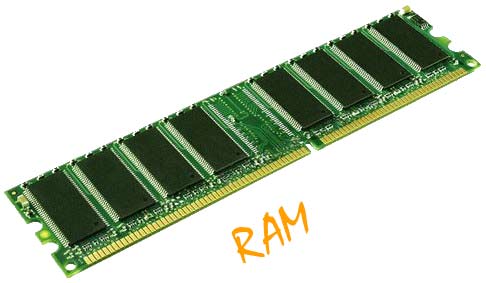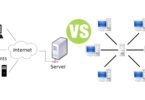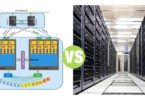Flash Memory vs Ram
Summary: Difference Between Flash Memory and Ram is that Flash memory is a type of nonvolatile memory that can be erased electronically and rewritten. While RAM , also called main memory, consists of memory chips that can be read from and written to by the processor and other devices.

Flash Memory
Flash memory is a type of nonvolatile memory that can be erased electronically and rewritten. Most computers use flash memory to hold their startup instructions because it allows the computer easily to update its contents. For example, when the computer changes from standard time to daylight savings time, the contents of a flash memory chip (and the real-time clock chip) change to reflect the new time.
Flash memory chips also store data and programs on many mobile computers and devices, such as smart phones, portable media players, PDAs, printers, digital cameras, automotive devices, digital voice recorders, and pagers. Some portable media players store music on flash memory chips. Others store music on tiny hard disks or flash memory cards. Flash memory cards contain flash memory on a removable device instead of a chip.
RAM
Users typically are referring to RAM when discussing computer memory. RAM (random access memory), also called main memory, consists of memory chips that can be read from and written to by the processor and other devices. When you turn on power to a computer, certain operating system files (such as the files that determine how the desktop appears) load into RAM from a storage device such as a hard disk. These files remain in RAM as long as the computer has continuous power. As additional programs and data are requested, they also load into RAM from storage.
The processor interprets and executes a program’s instructions while the program is in RAM. During this time, the contents of RAM may change. RAM can hold multiple programs simultaneously, provided the computer has enough RAM to accommodate all the programs. Most RAM is volatile, which means it loses its contents when the power is removed from the computer. For this reason, you must save any items you may need in the future. Saving is the process of copying items from RAM to a storage device such as a hard disk.
Three basic types of RAM chips exist: dynamic RAM, static RAM, and magnetoresistive RAM.
- Dynamic RAM (DRAM pronounced DEE-ram) chips must be re-energized constantly or they lose their contents. Many variations of DRAM chips exist, most of which are faster than the basic DRAM.
- Static RAM (SRAM pronounced ESS-ram) chips are faster and more reliable than any variation of DRAM chips. These chips do not have to be re-energized as often as DRAM chips, thus, the term static.
- A newer type of RAM, called magnetoresistive RAM (MRAM pronounced EM-ram), stores data using magnetic charges instead of electrical charges. Manufacturers claim that MRAM has greater storage capacity, consumes less power, and has faster access times than electronic RAM.
RAM chips usually reside on a memory module, which is a small circuit board. Memory slots on the motherboard hold memory modules.
Also Read:
Difference Between Access Time and Cycle Time of Memory
Difference Between Flash Memory and Cache Memory
Difference Between Volatile and Non-Volatile Memory
Difference Between Memory and Flash Storage






Leave a Comment
You must be logged in to post a comment.